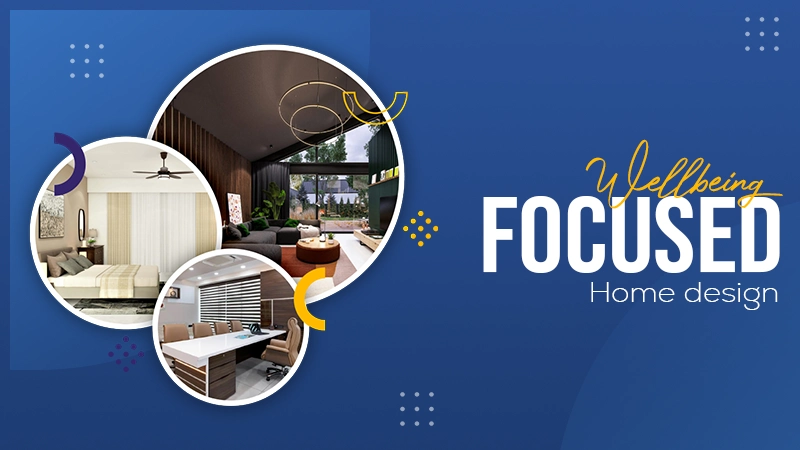Interior lighting isn’t just about making the house look appealing or enhancing the aesthetics; it has a direct correlation to human psychology as well. A well-lit room keeps you active and productive, and also acts as a mood booster.
Many might argue that there are a lot of expenses to bear in equipment to make the room well-lit and appealing at the same time. But that’s not true; there is no such need for a professional setup, as there are various alternatives.
We have gathered the 7 ways to improve lighting at home without being heavy on your pocket.
1. Use Natural Light
The best and most preferred way is to use most of the neutral light, not only is it cost-effective, but also supports the well-being of the nervous system. Natural lighting works well in houses that are painted with light colors that give a warm glow, making the interior look brighter.
The best way to utilize the full capacity of sunlight is by using light curtains and not the heavy ones that block the majority of rays. And using open shelves that let natural light pass through is the wisest choice as well. It is recommended replacing your home’s windows that are designed in such a way that allows you to enjoy a well-lit room.
2. Light in Layers
It is the smartest choice to add layers of light in your room rather than relying on one particular bulb. Add multiple sources of light, allowing you to create balance and depth while controlling the intensity of illumination.
There are multiple ways to add layers in lighting; it could be by incorporating LED strips, small spotlights, or wall sconces. And the best you can perfectly create the balance of lighting with natural light, as the evenings get dimmer, you can gradually turn on the lights.
Moreover, using the combination of natural light and layering, you would get an adaptable arrangement with an aesthetic look. This way, your home stays cozy, functional, and visually appealing throughout the day and night, without requiring expensive lighting gear.
3. DIY Light Kit
By using your creativity and recycled items, you can bring a unique and affordable lighting solution, saving you a lot of cost. Some of the cost-effective options are LED strips, clip-on lights that can be easily installed on shelves, furniture, and behind the television to highlight.
And by combining it with items like tin cans, fabrics, and glass items, you can create lighting fixtures that match your interior theme. In the future, it will become quite easy to modify the setup by replacing the material and improving the current look.
For extra brightness, reflective surfaces like mirrors, white marble, and light paints bounce off the light, making the room well-lit without additional cost on bulbs.
4. Adapt Lighting For Each Room
Many ignore the crucialness of choosing the right type of lighting for each room. For example, you won’t use 0 0-volt bulb in the bathroom and wouldn’t use harsh white light in the bedroom, where a soft, warm glow is preferred. Moreover, even using the same lighting setup would ruin the aesthetics and functional needs.
The biggest reason behind matching the lighting with the purpose of each room is to enhance the mood and the efficiency of the body. It is also scientifically proven that light directly affects the body, which acts like a natural clock. In daylight, we are more alert and filled with energy compared to the evening relaxes our brain.
Bathrooms require bright, shadow-free illumination for grooming, and bedrooms thrive on dimmable, warm lights to promote relaxation. On the other hand, for the living room, it is preferred to get a cool-toned lighting layer to calm the senses and promote relaxation.
5. Focus on The Corners
No matter which house you visit, in the majority of them corners have been the most neglected part of the house. Although it doesn’t create much of a difference but dark, shadowy corners always look spooky and unwelcoming.
You can fill the space by adding a table lamp or adding LED puck lights just above the corner ceiling. For a cleaner look, go for recessed lighting or tall, slim floor lamps that blend seamlessly with your decor.
Such add-ons enhance the room style and make a big difference in how your interior looks and feels.
6. Consider Types of Light Bulbs
If you are specifically going for the bulbs, it is important to understand their type and voltage. There are mainly 3 types of bulbs: warm bulbs, cool bulbs, and daylight bulbs.
Warm bulbs are mainly installed in the bedroom for a cozy and lively atmosphere, cool bulbs are preferred in the kitchen or study room, and on the other hand, daylight bulbs are meant for the bathroom or dining room.
Opting for LED bulbs with adjustable brightness can be a long-term, energy-efficient investment.
7. Highlight Special Room Features
LED strips are a great way to highlight a certain feature in your room. It could be used to highlight television or a showpiece. Another way to highlight something is by using spotlights that are commonly installed on shelves.
Even using the color-changing LED strips to set the mood for different occasions is a great idea. Another thing you can consider is installing a lamp or wall wall-mounted lamp near the mirror to make the room look bigger as mirrors bounce the light.
Conclusion
Here’s the wrap on the 7 best methods to illuminate your room perfectly without putting a hole in your pocket. These methods are not just about relying completely on artificial lighting, but also include the combination of natural sunlight as well.
Moreover, making a thoughtful choice or an add-on that aligns with the interior theme brings an appealing look.





